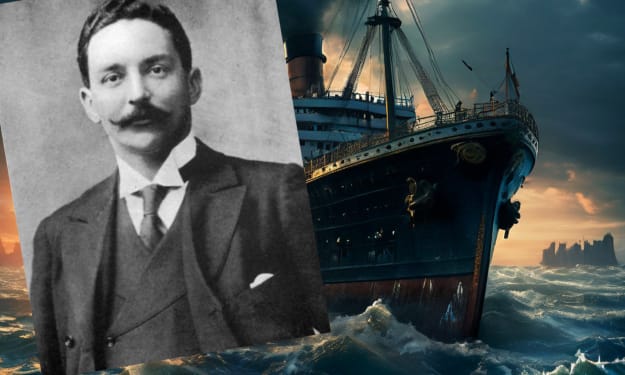
(1869-1936)
She was called “The first Queen of French Haute Couture” and was known for her modern and innovative designs. She was the first major female couturier, as well as one of the pioneers of the modern fashion business. Her clientele included the Queens of Spain, Belgium and Portugal. She was Jeanne Paquin.
Jeanne Marie Charlotte Beckers was born in 1869. Her father was a physician and Jeanne was one of five children. As a teenager, she was trained as a dressmaker on Boulevard Haussman, and having a real talent for design, Jeanne soon ‘rose through the ranks’ to become in charge of the atelier (a workshop/studio used by an artist or designer). Even at this young age, Jeanne displayed her talents, having an ‘eye for fashion’, was a talented dressmaker and showed that she had good management skills.
In 1891, Jeanne married Isidore Rene Jacob, also known as Paquin. Isidore owned “Paquin Lalanne et cie”, which was a couture house which had ‘grown out’ of a menswear shop in the 1840’s. Once married, the couple renamed the couture house to “Paquin” and started to build up the “House” together.
“Paquin”, their Maison de Couture, opened in 1891, at 3 Rue de la Paix in Paris, right next door to the famous House of Worth. Jeanne was in charge of designing while Isidore actually ran the business. Initially, Jeanne focused on designing in pastel colours, eventually introducing black ‘as a colour’ in her haute couture collections. This was an unusual move because, at the time, black was only worn during mourning. Jeanne managed to make black fashionable by blending it with vividly colourful linings and embroidered trim.

Jeanne was the first couturier to send her models to public events like operas and horse races for publicity, because they were dressed in her latest designs. She would work with theatres, which was a bold move because no other couturier would do this. Jeanne was described as “the most commercial artist alive” in 1913 by a reporter who worked for the New York Times.
In 1896, a London branch was opened and the “House” became a limited company. Later on, shops were opened in Buenos Aires, Madrid and New York.
In 1900, Jeanne became instrumental in organising the “Universal Exhibition” Fashion Section, her designs featuring prominently at the Exhibition. For the Exhibition, Jeanne had a mannequin of herself, wearing her latest designs, made for display as a way to get interest in her designs.
Her husband, Isidore, died in 1907, at the young age of 45, leaving Jeanne a widow at the young age of 38. His death was unexpected and over 2,000 people attended the funeral, after which Jeanne would wear mainly black and white.
In 1912, Jeanne joined with her half-brother and opened a business which dealt and sold fur (a ‘furrier), called “Paquin-Joire” on 5th Avenue in New York City. In the same year, she signed an exclusive illustration contract with “La Gazette du Bon Ton”, who also worked with Paul Poiret and the House of Worth.
The following year, in 1913, Jeanne accepted and received France’s prestigious honour “Legion d’Honneur” — “in recognition of her economic contributions to France”. Jeanne was the first woman designer to receive the honour. The following year, Jeanne was again busy touring the United States. For $5, people (the general public) could see “The House of Paquin’s” latest designs. The tour was sold out despite the high ticket price.
During the First World War, Jeanne served as president of the Chambre Syndicale de la Couture. She also became the first woman to serve as president of an employers syndicate in France. The House of Paquin employed up to 2,000 people (at its apex), in comparison to the 50 - 400 workers the other Couture Houses employed. The “House’s” clientele included the Queens of Spain, Belgium and Portugal, as well as courtesans like La Belle Otero and Liane de Pougy.

Jeanne retired in 1920 and passed the “House” onto Madeleine Wallis, who was her assistant at the time. Madeleine remained the House designer until 1936, which was the same year Jeanne Paquin died.The “House” was then handed on to several different ‘designers’ until it closed in 1956, because it just couldn’t compete with the new up and coming designers of the time, Christian Dior being among them.
“(Sometimes) — it is the material that inspires me. But I get inspiration everywhere. When I am travelling or walking in the street, when I see a sunset with beautiful blendings of colour, I often get an inspiration that helps me to evolve new combinations — Our work in some respects resembles that of the painter.” Jeanne Paquin.
About the Creator
Ruth Elizabeth Stiff
I love all things Earthy and Self-Help
History is one of my favourite subjects and I love to write short fiction
Research is so interesting for me too






Comments
There are no comments for this story
Be the first to respond and start the conversation.